More great Pavilion titles

 www.anovabooks.com
www.anovabooks.com
When passionate, self-taught home cook Simon Daley tasted his future mother-in-law Roshans chicken curry for the first time, he was smitten. It was a chicken curry like hed never tasted before, and he knew he had to have the recipe even if he had to marry Roshans daughter to get it!
Simon asked Roshan (Rose) to teach him her vast personal collection of recipes, and now in their kitchen a special friendship flourishes. Rose demonstrates her recipes, recalling techniques and quantities from memory, artfully balancing spices and flavours with an instinct honed by half a century of cooking experience. At her side throughout the process, Simon makes exacting notes, weighing, measuring and timing until he has a clear, precise set of instructions. Then, from these instructions, Simon attempts to cook the dishes himself and the results are put to the ultimate test: Simons wife tastes everything he makes, ensuring that it remains true to the food she has eaten all her life.
This unique book draws on the extensive repertoire of an exceptional home cook, including traditional dishes passed from mother to daughter over centuries, from the familys Gujerati roots in India, through the African influences of Roshans youth in Uganda and Tanzania, to modern adaptations for life in England today. You will recognise some familiar names tandoori chicken, biriani, and samosas are all here alongside more unusual, regional specialities but youll find their flavours remarkably different from the food available in Indian restaurants. Over 100 straightforward, foolproof recipes ensure impressively authentic results, with the distinctive taste of real Indian home cooking.
a beautiful book with a rare hand-made, artisan quality. It is a wonderful collaboration a faithful record of the instinctive cooking that goes on in a typical Indian household, and an overdue celebration of the unsung skills of the home cook.
Most importantly it is a story of a familys culinary culture, spanning three different continents and many generations. In the old days, recipes would pass orally from one generation to the next but, with changes in lifestyle, that chain is being broken. In this light, the book takes on another dimension and real significance.
Vivek Singh, Executive Chef at The Cinnamon Club
ROSHAN HIRANI (Rose) is the eldest daughter of a large Indian family and, from the age of 11, it was her job to cook for the family. She has more than 50 years of experience and is well known in her community and neighbourhood as an outstanding cook. She is often called upon to provide food for religious and social occasions; her chapatis are legendary.
SIMON DALEY is Roshans son-in-law, who has worked as a designer and art director specialising in cookery books for more than 10 years. He is an excellent home cook with a keen interest in the traditions and culture of food. His main aim in this book is to continue the centuries-long process of passing down accumulated wisdom from one generation to the next, by recording his mother-in-laws family recipes.

INDIAN FAMILY COOKBOOK


Dedicated to the memories of my grandmother Eileen (my nan), who taught me to love food, and my father-in-law, Madat, who would have been proud.
And to my son Haroun our future.
Conceived and produced by Giraffe Books
www.giraffebooks.com
Photography by Salima Hirani
Art direction and design by Simon Daley
Food preparation and styling by Roshan Hirani and Simon Daley
Editor: Salima Hirani
US consultant: Constance Novis
Proofreaders: Alyson Silverwood and Siobhn OConnor
Indexer: Patricia Hymans
Copyright Pavilion Books 2008
Text and pictures Giraffe Books 2008
This edition published in 2012
First published as Cooking with my Indian mother-in-law in Great Britain in 2008 by Pavilion Books
An imprint of Anova Books Group Ltd,
10 Southcombe Street,
London W14 0RA
The right of Simon Daley to be identified as the author of this work has been asserted by him in accordance with the Copyright, Designs and Patents Act 1988.
All rights reserved. No part of this publication may be reproduced, stored in a retrieval system, or transmitted in any form or by any means, electronic, mechanical, photocopying, recording or otherwise, without the prior written permission of the copyright owner.
10 9 8 7 6 5 4 3 2 1
British Library Cataloguing-in-Publication Data:
A catalogue record for this book is available from the British Library.
Ebook ISBN 978-1-90910-813-4
Hardback ISBN 978-1-86205-984-9
The contents, websites and footnotes have been hyperlinked.
www.anovabooks.com

Introduction
This book is about home cooking. For me, its the best kind of cooking because its always done for the purest of reasons: for sustenance and for love. Domestic cooking has deep roots in all cultures youll find centuries-old recipes that have been passed down over generations, usually from mother to daughter but sadly, nowadays good home cooking is a rare and precious thing. Few of us have the time for the kind of comprehensive apprenticeship that can turn skills learned by rote into instincts, which is why, in this book, Ive gathered up the recipes of my mother-in-law, Roshan (I call her Rose a nickname coined by her late husband Madat). In these pages I hope to pass on all Ive had the privilege of learning from a woman who has spent more than half a century honing her skills by cooking for her family.
Ill never forget my first visit to Roses house. She welcomed me into her home in the way she knew best: by offering good food. For a single man who hadnt had a home-cooked meal (well, not one that I hadnt cooked myself) in years, it was such a warm, embracing welcome.
When Salima the woman who is now my wife and I arrived at her parents home in North-West London on that grey, typically un-summery English June day, Madat opened the door and welcomed us with the sunniest of smiles. The scent of onions and spices filled the hallway, wafting and enticing me like a cartoon trail towards the heart of the house. In the spotlessly clean kitchen I met my future mother-in-law (although I didnt know it then), petite and sprightly, with short, dark hair untouched by grey, dressed in an old T-shirt and tracksuit bottoms liberally dusted with flour from making a huge stack of chappatis. The walls of the room were lined with stacks of bulk-bought food: shrink-wrapped multiples of canned tomatoes, industrial-sized cans of cooking oil, and sacks of rice and chappati flour.
A meal was set out on the plastic wipe-clean tablecloth, served up in the dented, well-worn pans it had been cooked in: perfect rice, sitting in a pristine layer undisturbed by stirring; an impressive stack of whole-wheat chappatis, light and fluffy as breeze-blown pillowcases; flat green guwar (cluster) beans scented with mustard (a favourite dish of Salimas); and finally, a simple chicken curry with a shimmering tomato broth infused with onions and cinnamon.

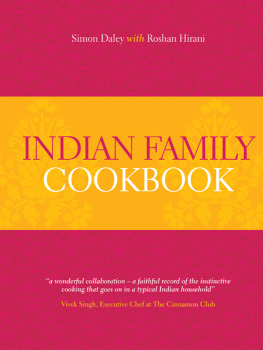


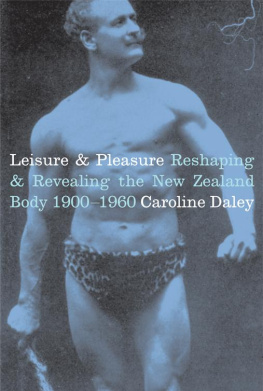


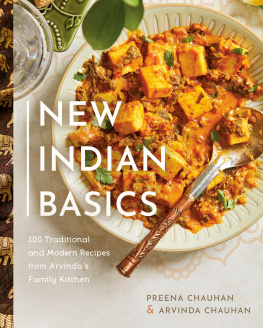

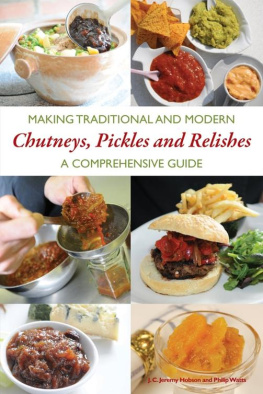
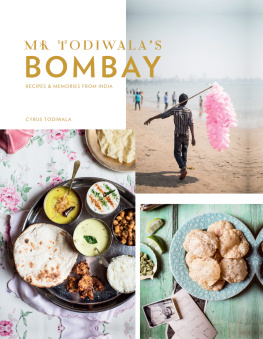
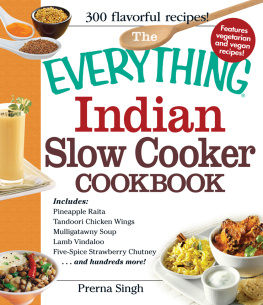

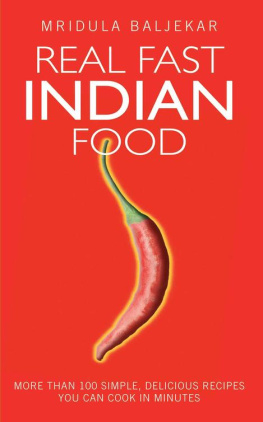
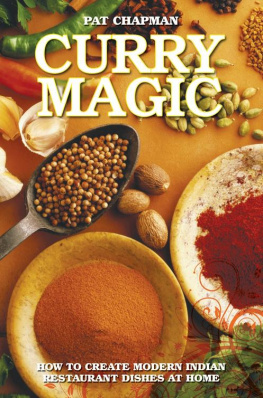
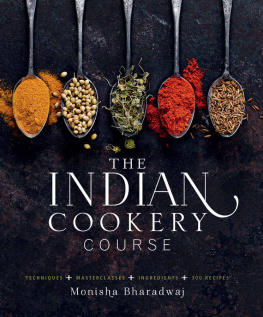
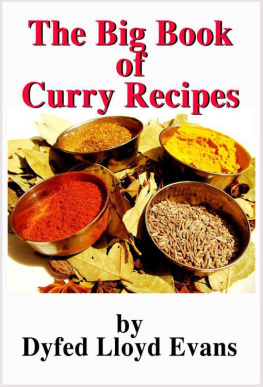


 www.anovabooks.com
www.anovabooks.com


